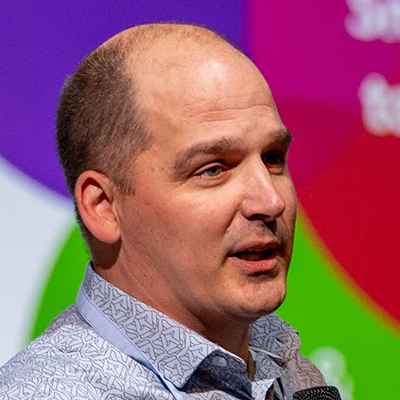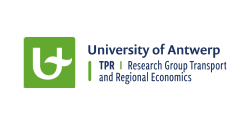
STAD ANTWERPEN
 My name is Chris Van Maroey. I’m a Master of Architecture and currently Project leader Smart Ways to Antwerp (SWtA) for the City of Antwerp. SWtA was initially founded as a communication answer to the several road and infrastructural works that are taking place in the city of Antwerp. It first focused on giving an overview of and informing about all road works with a major impact on traffic.
My name is Chris Van Maroey. I’m a Master of Architecture and currently Project leader Smart Ways to Antwerp (SWtA) for the City of Antwerp. SWtA was initially founded as a communication answer to the several road and infrastructural works that are taking place in the city of Antwerp. It first focused on giving an overview of and informing about all road works with a major impact on traffic.
From 2016 on, the scope of SWtA has significantly expanded. One of the activities that were launched is the cooperative model called the Marketplace for Mobility. A strong stakeholder engagement strategy, in order to develop and implement a well-thought-out, resilient, innovative and future-proof mobility policy.
As team leader of the ‘Marketplace for Mobility’, I’m responsible for the private-public collaborations with mobility providers, governments and EU projects such as SPINE.
My role in the SPINE project is the coordination of Work Package 2, namely the setup, operation and successful progress of the Living Labs developed in four lead cities of SPINE
 My name is Stijn Vernaillen, Antwerp city Task leader of the Antwerp LLs. I’m working for Smart Ways to Antwerp as a mobility and data expert. I’m responsible for everything related to Mobility-as-a-Service and data integrations as well as translating user needs into technical specifications.
My name is Stijn Vernaillen, Antwerp city Task leader of the Antwerp LLs. I’m working for Smart Ways to Antwerp as a mobility and data expert. I’m responsible for everything related to Mobility-as-a-Service and data integrations as well as translating user needs into technical specifications.
My role in the SPINE project is to lead the activities of the Antwerp living lab and coordinate between the various parties involved, both internal and external. The goal is to maximise the impact of the living lab and make sure that the measures taken within the living lab are aligned with all the other actions. Furthermore, it is key is to make sure that the successful measures from the SPINE living lab will continue after the end of the project.
The city was approached by the University of Antwerp to participate in the project. The main reason was the city’s active involvement in previous European mobility projects (CIVITAS Portis, Interreg MobiMix , SCALE-UP, FastTrack…)
In this regard, the University engaged the city of Antwerp to participate in the project. The University intends to support us to define appropriate measures and assess which solutions works best towards the aim of reinforcing public transport.
The project provides the opportunity to implement and further finetune several mobility solutions. We also hope to benefit from the expertise and know-how of other cities and technical partners.
Antwerp focuses on increasing the uptake of public transport at different levels of multimodal hubs, stimulating collaborative mobility. Within SPINE, Antwerp wants to explore what the key success factors are in aligning both physical infrastructural and digital measures at multimodal hubs and which nudges have the biggest impact on behavioural change.
Important added value within SPINE project will be to use the lessons learned to contribute to the policy framework, especially on the local and regional level by documenting the identified pathways and solutions and aligning the outcome with the recent advancements in spatial and mobility planning, SUMPs and SULPs.
Antwerp has a double role in the SPINE project. Antwerp’s first task is to coordinate the smooth implementation of the four lead cities Living Labs. But Antwerp is also one of the lead cities with her own Living Lab to develop, next to Bologna, Tallinn and Las Palmas.
In this regard, the Antwerp living lab is established with the primary objective of improving guidance in and around large mobility hubs, such as P&Rs and train stations. A particular focus is to integrate real-time data into various communication channels that are already available, including the Smart Ways to Antwerp website, app, route planner, and widget. These improvements aim to provide better support to users throughout their customer journey and enhance the user experience, ultimately leading to increased intermodal trips and utilization of the mobility hubs.
Our main objective is to encourage and facilitate a modal shift towards PT and sustainable transport behaviour to keep the city and region accessible and liveable, now and in the future. Through improving infrastructure, informing, nudging and incentivizing people to travel differently, we influence the demand for mobility.
Antwerp hopes for a successful implementation of all the SPINE Living Labs and in achieving the main objectives, namely the increase of public transport ridership for more than 30%, improved user satisfaction with public transport for more than 25%, reduced number of cars in the city centre for more than 30% and reduced CO2 emissions for more than 20%.



